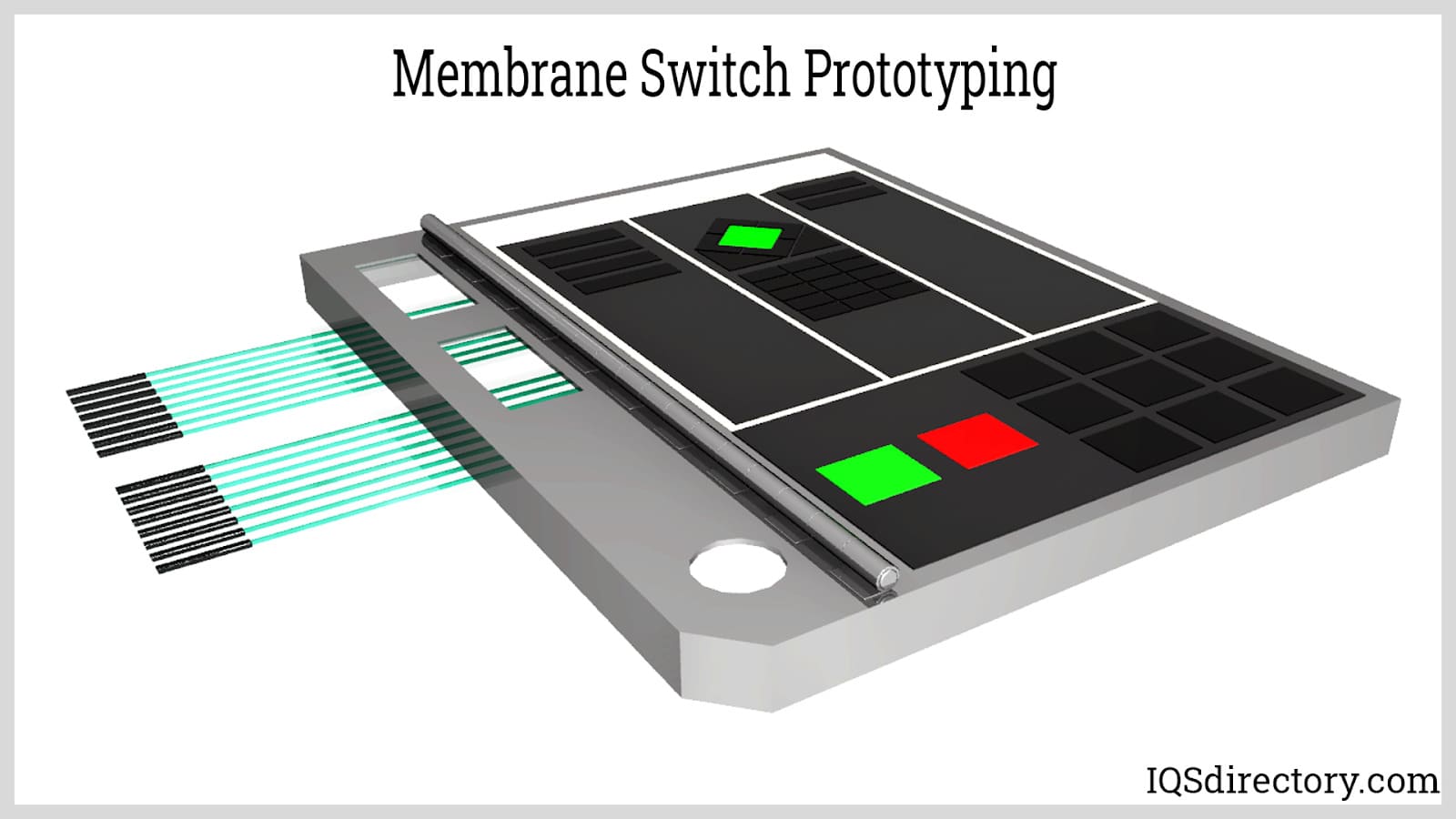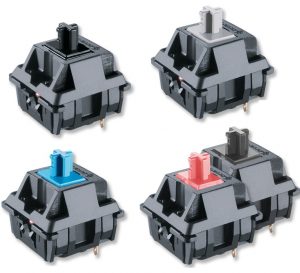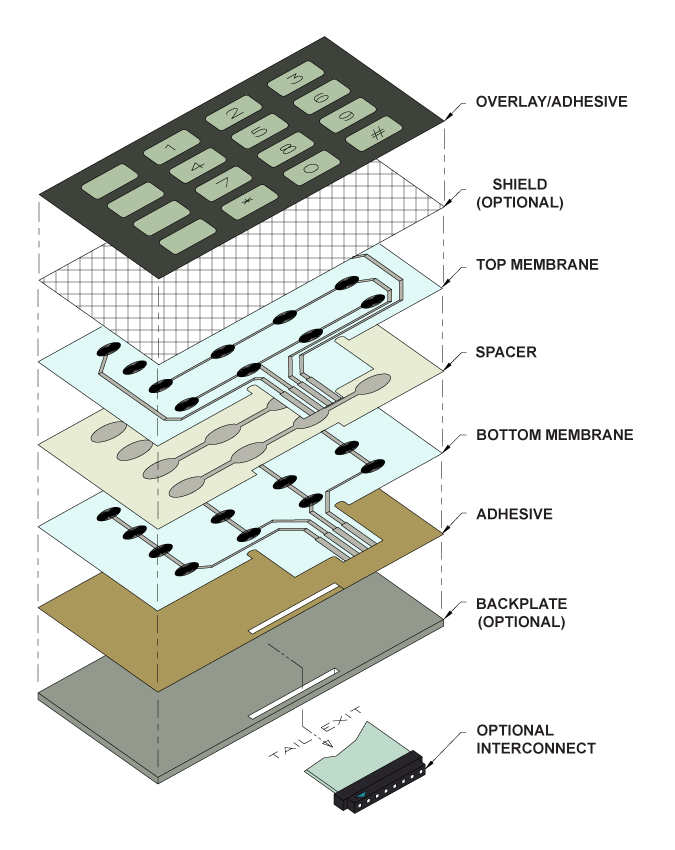Crucial Attributes to Seek When Picking a Membrane Switch
Crucial Attributes to Seek When Picking a Membrane Switch
Blog Article
Recognizing the Performance of Membrane Switches for Interface Devices
The capability of membrane layer changes stands for a substantial improvement in customer interface style, incorporating efficiency with visual versatility. As sectors significantly prioritize user experience, understanding the subtleties of membrane layer button innovation comes to be important.
What Are Membrane Layer Switches?
Membrane layer switches are ingenious user interface devices that facilitate customer communication with digital devices. These functional components contain numerous layers, including a graphic overlay, spacer, and a published circuit layer. The layout permits for a seamless assimilation into various digital tools, enhancing both the aesthetic and useful aspects of interface.
Membrane layer switches are commonly employed in a large range of applications, from home appliances to commercial equipment and medical gadgets. Their building and construction commonly features a slim profile, making them an ideal selection for small designs. The responsive responses given by these switches can be crafted to meet details individual choices, guaranteeing reliable interaction in between the customer and the tool.
Durability is one more substantial advantage of membrane layer switches, as they are immune to dust, dampness, and chemicals, which enhances their life expectancy in requiring environments. Furthermore, these switches can be tailored in terms of shape, dimension, and visuals layout, enabling branding and user-specific attributes. Generally, membrane changes represent a functional solution for boosting individual experience in digital gadgets, incorporating capability with visual appeal in a reliable manner.
How Membrane Changes Work
Operating on an uncomplicated concept, membrane switches use a layered building to sign up individual input effectively. Each switch consists of several layers, including a printed circuit layer, a spacer layer, and a top graphic layer, which are made to collaborate effortlessly. When a user presses the top layer, it presses the spacer layer, bringing the conductive aspects of the circuit layer right into call with each other.
This contact creates a shut circuit, indicating the gadget to implement a specific feature. The style permits various setups, consisting of responsive responses, which can enhance the user experience by giving a physical feeling upon activation. The materials made use of in membrane buttons typically consist of flexible substrates, such as polyester or polycarbonate, which ensure resilience and resilience versus damage.

Key Benefits of Membrane Layer Switches

One more substantial benefit is their density. Membrane layer buttons are thin and lightweight, which allows suppliers to conserve area in their gadgets without compromising performance. This function is specifically helpful in applications where weight and volume are essential considerations.
Additionally, membrane buttons are resistant to dirt, moisture, and chemicals, improving their resilience. This durability prolongs their life expectancy and minimizes the demand for regular substitutes, resulting in cost financial savings in time.
Additionally, the tactile responses provided by membrane switches can be enhanced to boost individual see it here interaction. They can include features such as elevated buttons or audible clicks, improving functionality and individual experience.
Applications Across Industries
User interface tools making use of membrane layer buttons are widespread in a broad selection of sectors, showcasing their flexibility and capability. Membrane Switch. In the medical sector, membrane switches are integral to gadgets such as diagnostic equipment and patient surveillance systems, where their resilience and ease of cleansing are essential for preserving hygiene standards. In a similar way, in the automobile market, these buttons are used in control panel controls and infotainment systems, providing a streamlined and contemporary interface for individuals.
Moreover, the customer electronics market take advantage of membrane buttons in home appliances and portable gadgets, where compact design and user-friendly interfaces boost user experience. Industrial applications likewise leverage membrane layer switches for control panels in equipment and automation systems, emphasizing their effectiveness and resistance to rough environments.
In the aerospace and defense industries, membrane layer buttons are made use of in cockpit controls and tools, where dependability and efficiency under extreme problems are paramount. In addition, the pc gaming industry increasingly includes membrane buttons in controllers and game devices, adding to an engaging user experience. Overall, the versatility of membrane changes enables their prevalent use across countless industries, emphasizing their significance in modern-day interface design.
Future Trends in Membrane Layer Switch Technology

Additionally, the usage of innovative products, such as polycarbonate and polyester films, is anticipated to rise, giving improved resilience and resistance to environmental stressors. These products add to the overall long life of membrane switches, making them appropriate for harsher go to these guys commercial applications.
Moreover, the incorporation of wise modern technology, consisting of IoT connectivity, will allow membrane layer buttons to communicate with various other gadgets and systems, assisting in a more interactive customer experience. This trend straightens with the growing need for clever gadgets throughout different sectors, from medical care to consumer electronic devices.
Last but not least, modification alternatives are expected to increase, allowing suppliers to produce bespoke remedies tailored to particular user needs and preferences. These developments will certainly position membrane layer switches as vital elements in the evolution of user interface modern technology.
Conclusion
In conclusion, membrane layer switches stand for a critical innovation in user interface technology, supplying a reputable and flexible solution for varied electronic applications. As innovations in material science and touch sensing innovations proceed, the functionality and applicability of membrane switches are anticipated to expand, enhancing their value in modern digital gadgets.
Report this page